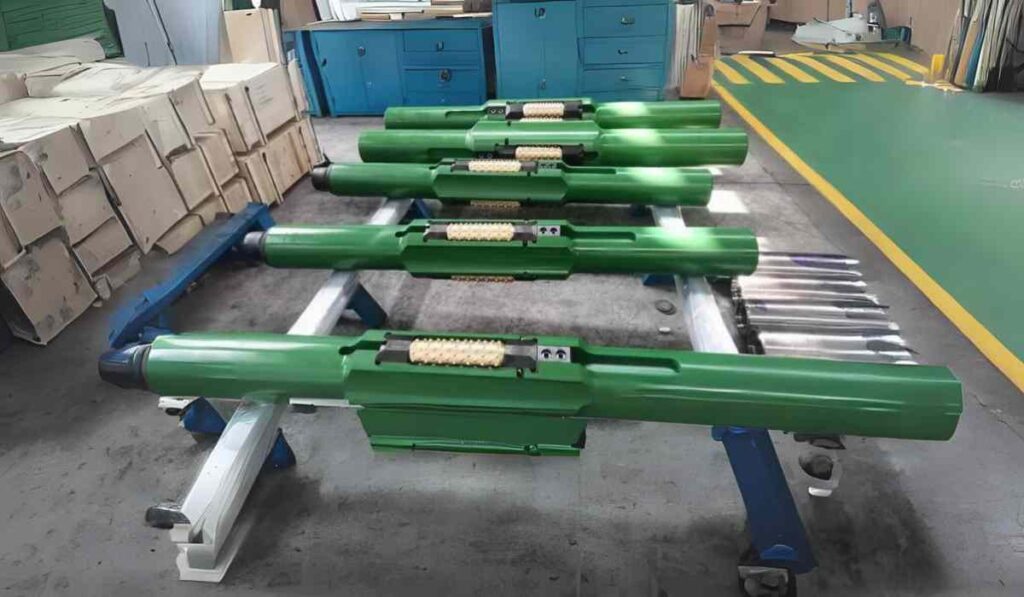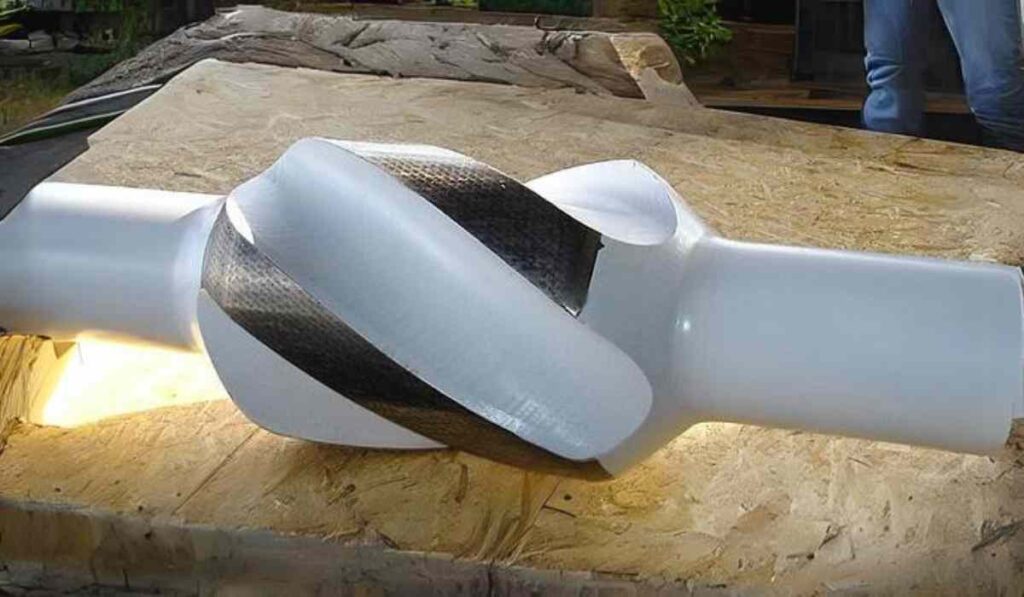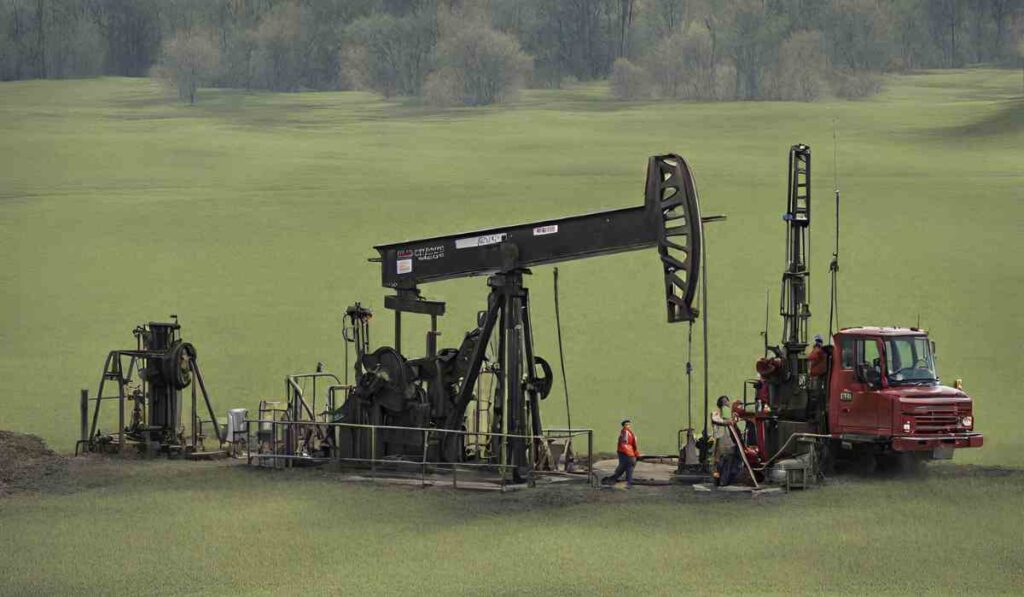In the realm of drilling operations, where precision is paramount and efficiency is key, drilling stabilizers stand as stalwart guardians, ensuring smooth progress and optimal performance.
But what exactly are these stabilizers, and how do they contribute to the drilling process? In this comprehensive guide, we’ll delve deep into the intricacies of stabilizer drilling, covering types, functions, maintenance practices, and more.
Understanding Stabilizer Drilling
At its core, stabilizer drilling is a crucial component of the bottom hole assembly (BHA) within a drill string.
Its primary function is to provide mechanical stability, prevent unintended sidetracking, minimize vibrations, and maintain the integrity of the borehole being drilled.
Types of Drilling Stabilizers

Integral Blade Stabilizers (IBS)
Integral blade stabilizers are the workhorses of drilling operations, renowned for their exceptional strength and durability.
Crafted from a single piece of high-strength steel, these stabilizers feature blades seamlessly forged with the body, ensuring maximum stability under rigorous drilling conditions.
Integral blade stabilizers are further categorized based on their installation positions:
- Near-Bit Stabilizer: Positioned close to the drill bit, the near-bit stabilizer helps stabilize the BHA directly at the point of drilling.
- String Stabilizer: Located further up the drill string, the string stabilizer provides additional stability and control along the length of the BHA.
Sleeve Stabilizers
Sleeve stabilizers, also known as variable-gauge stabilizers, offer adaptability to varying hole sizes. These stabilizers feature an outer sleeve that can be adjusted to accommodate different wellbore dimensions, allowing operators to optimize stability across diverse geological formations.
Replaceable Blade Stabilizers
Replaceable blade stabilizers offer flexibility and cost-effectiveness through a modular design. With easily replaceable blades, these stabilizers minimize downtime and maintenance costs, making them ideal for extended drilling projects.
Non-Rotating Stabilizers
Non-rotating stabilizers, also referred to as fixed blade stabilizers, are designed to minimize drillstring rotation.
By locking the blade configuration, these stabilizers reduce torque and vibrations, which is particularly beneficial in directional drilling and sensitive formations.
Roller Reamers
Roller reamers play a crucial role in centralizing the BHA, minimizing vibrations, and enhancing overall stability.
Featuring components made of special alloy steel, roller reamers are designed for durability and performance in challenging drilling environments.
Functions of Drilling Stabilizers

Controlling Wellbore Trajectory
A primary function of drilling stabilizers is to guide and center the BHA within the wellbore, controlling the inclination angle and curvature to maintain the desired trajectory.
By distributing weight effectively, stabilizers minimize non-wellbore forces on the drill string and bit, enhancing drilling efficiency.
Hole Expansion
In situations where the wellbore undergoes curvature or diameter reduction, stabilizers assist in drilling alongside the drill string, contributing to hole expansion.
The chamfer at the transition between the stabilizer’s body and the working section facilitates this process, ensuring smooth drilling operations.
Conditioning of the Well Wall
Through frictional contact with the well wall, stabilizers trim and smooth the borehole, improving its overall quality. This conditioning process enhances wellbore stability and facilitates subsequent drilling activities.
Benefits of Drilling Stabilizers

- Enhanced Drilling Efficiency: By minimizing wellbore deviation, reducing vibrations, and optimizing hole gauge, stabilizers contribute to smoother drilling operations and an increased rate of penetration (ROP).
- Improved Trajectory Control: Stabilizers play a vital role in maintaining precise well trajectories, essential for directional drilling and complex reservoir geometries.
- Cost Savings: The use of replaceable blade stabilizers and other modular designs reduces maintenance costs and downtime, resulting in overall cost savings for drilling projects.
- Versatility: With various types and configurations available, stabilizers can be tailored to specific drilling challenges and geological conditions, enhancing adaptability and performance.
FAQs About Drilling Stabilizers
What factors should be considered when selecting a drilling stabilizer?
When choosing a stabilizer, factors such as formation characteristics, well trajectory, required hole size, and drilling objectives should be carefully evaluated to ensure optimal performance.
How do drilling stabilizers contribute to improved drilling efficiency?
By stabilizing the BHA, minimizing vibrations, and controlling wellbore trajectory, stabilizers help streamline drilling operations, resulting in faster drilling rates and enhanced overall efficiency.
What maintenance practices are recommended for drilling stabilizers?
Regular inspection, cleaning, and adherence to manufacturer guidelines are essential for maintaining stabilizer performance.
Replaceable blade stabilizers require monitoring and timely replacement of worn or damaged components to ensure continued reliability.
What is the use of stabilizers in drilling?
Stabilizers maintain drilling direction, minimize vibrations, and ensure the quality of the borehole during drilling operations.
What is a string stabilizer?
A string stabilizer is a type of drilling stabilizer positioned along the drill string to provide stability and control.
What is bottom-hole assembly in drilling?
The bottom hole assembly (BHA) is the lower part of the drill string, including the drill bit and various tools used for drilling operations.
What are the components of a drill string?
Components of a drill string include drill pipe, drill collars, stabilizers, and the drill bit, among others.
Visit our site: Drills Boss
Conclusion
In conclusion, drilling stabilizers are indispensable tools in the oil and gas industry, offering stability, precision, and efficiency in drilling operations.
From controlling well trajectories to minimizing vibrations and optimizing hole gauge, these versatile devices play a critical role in achieving drilling success.
By understanding the types, functions, and benefits of drilling stabilizers, operators can maximize their effectiveness and contribute to the advancement of drilling technologies.
With ongoing advancements in drilling technology and equipment, the role of stabilizers continues to evolve, driving innovation and efficiency in the exploration and production of hydrocarbon resources.
As drilling operations become increasingly complex and challenging, the importance of reliable stabilizers remains paramount in ensuring safe, efficient, and cost-effective well construction.
Whether drilling in conventional reservoirs or tackling unconventional formations, the right choice of drilling stabilizers can make all the difference, paving the way for successful drilling campaigns and sustainable energy production for years to come.









